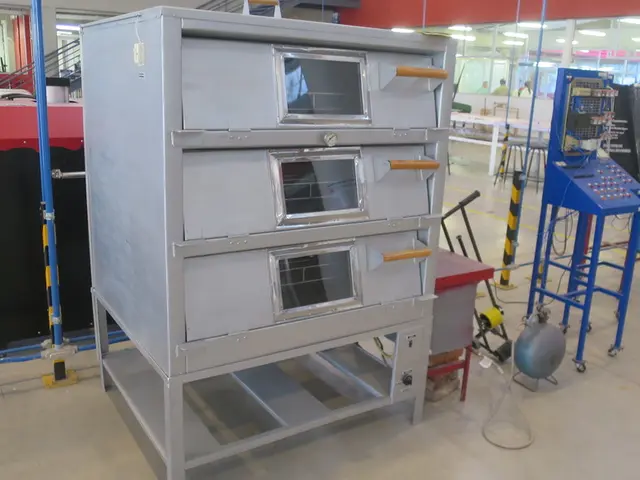UNDERSTANDING LISA: The Real Sightings of the Revolutionary Gravitational Wave Detecting Device
LISA, a jaw-dropping $1.6 billion project slated for launch in the following decade, will revolutionize the way we perceive gravitational waves. These minuscule ripples in spacetime, first proposed over a century ago and only detected eight short years ago, will be examined like never before.
In the autumn, we delved into the intricate design of LISA and the monumental challenges that must be surmounted to send this futuristic marvel into the cosmos. Now, we're digging deeper, exploring the rich insights that await us once LISA has collected its valuable data – shedding new light on the universe's greatest mysteries, from the origins of gravitational waves to their cosmic repercussions.
LISA: elegance meets precision
LISA, an acronym for the Laser Interferometer Space Antenna, consists of three spacecraft orbiting the sun in a fixed triangular configuration. This interferometer utilizes laser interferometry – a method involving highly precise laser beams that measure the distance between masses – to detect gravitational waves. The beam's length stretches an astounding 5 million miles (8 million kilometers), with each arm of LISA's triangle representing around 1.6 million miles (2.5 million kilometers) of that distance.
The lasers are indispensable but just one component of LISA's design. They act as measuring sticks, quantifying the distance between three metallic cubes situated in each spacecraft. These cubes are crafted from a gold-platinum alloy – chosen to minimize magnetization and magnetism's potential influence on the cubes. LISA's ultimate goal is to have these metal edifices drift through space, uninfluenced by forces outside gravitational waves, experiencing the very essence of spacetime.
As Saavik Ford, an astrophysicist at the American Museum of Natural History, explained during a call with Gizmodo, the objective is straightforward but challenging: "We're essentially launching these cubes, and we just want them to sit there and enjoy spacetime with no forces acting on them – except for spacetime and gravitational waves."
Navigating these cubes without causing collisions is not for the faint-hearted. "You must maneuver the craft as the masses fall, to ensure the spacecraft itself doesn't drift into the masses and slam into them," says Ford, adding, "it's a technically demanding endeavour, frankly mind-blowing. I am delighted it is not my department!"
NASA is contributing several components to LISA's instrumentation, including its laser system, telescope systems, and devices responsible for manageing the electric charge on the test cubes.
LISA's test cubes are made of gold-platinum. Image: ESA
Space-soothsayer for primordial black holes
Facilitating the detection of gravitational waves is one of NASA's most intriguing missions. Ground-based detectors – like LIGO-Virgo-KAGRA Collaboration – excel at picking up high-frequency gravitational waves, typically originating from black holes as massive as stars. However, computing the frequencies of larger masses like those obtained by merging two hundred times the mass of our sun – borders on futility on Earth.
"Essentially, there's a frequency where the Earth is just too noisy," explains Ford. "You can't detect that, so you have to go to space, whatever it takes."
In space, pulsar timing arrays pave the way for detecting the largest black holes. This method uses Earth-based observatories to monitor the consistent flashes of light from rapidly spinning stellar remnants (known as pulsars). The slight delay or acceleration of these light signals to Earth indicates that spacetime has either been stretched or compressed by gravity – a telltale sign of gravitational waves. In 2023, a team of pulsar time array collaborations presented strong evidence of a gravitational wave background in their data[1].

The black holes detected by pulsar timing arrays generally weigh millions of times the mass of our sun and dwell at galaxy centers – even eclipsing the central black hole in the Milky Way, Sagittarius A*, which boasts an impressive 4 million solar masses[2]. LISA finds itself in an ideal position to investigate low-frequency gravitational waves almost impossible to distinguish from background noise in Earth-based detectors.
This detective work may reveal colossal black hole mergers involving star-sized black holes slamming into supermassive ones. It also uncovers intimate pairs of compact objects and other celestial bursts and backgrounds[2].
"Pulsar timing arrays provide information about the stochastic background for massive black hole binaries at low frequencies, while LIGO has set bounds on rates for different families of stellar-mass compact object mergers. However, the most exciting scientific output with LISA will likely be centered around massive black hole binary mergers," commented Emanuele Berti, a theoretical physicist from Johns Hopkins University[2].
Sifting through cosmic static in space
Though LISA will enjoy fewer disruptions than Earth-bound detectors, it must still navigate its share of cosmic noise. The biggest challenge comes from compact celestial objects – like white dwarf binaries – producing their own gravitational waves. These objects pose difficulties if they stir the spacetime into a general background of noise. Happily, in most instances, the noise can be filtered out by focusing on pronounced binary pairs identified as 'verification binaries.' These cosmic double-edged swords prove invaluable for confirming LISA's capabilities once it has taken its position in orbit.
LISA will concurrently detect gravitational waves generated by millions of sources, many of which reside within our galaxy. The unenviable task of separating the 'wheat from the chaff' lies with data processing, with scientists fitting observations to existing theories and models to draw definitive conclusions. LISA's highly anticipated launch is still years away, but scientists have launched mock data challenges to prepare for the real action impending in the not-too-distant future.
Tracing cosmic evolution
The birth, death, and life cycle of stars form the bedrock of understanding the presence and evolution of black holes. Stars' nuclear fusion processes generate the elements, while the type and quantity of stars emanating from galaxies may influence the mass and behavior of their galaxy's central black holes. Black holes play an active role in cosmic evolution, many times vomiting stellar materials into space, making them important agents in shaping their universe.
"There are only two questions in astrophysics, and they are 'how did we get here?' and 'are we alone?' Every single thing that we do is geared towards answering some small piece of one or the other–and sometimes both," Ford points out. "The 'how did we get here' question is pretty important to understanding these black holes."
A profound understanding of the cosmos and our place within it can only be achieved by unlocking the puzzle of black holes. By studying the behavior of these enigmatic celestial objects, scientists hope to answer fundamental cosmic questions and unravel complex mysteries lying beyond our comprehension.
References:
- Maggiore, L. (2019). Gravitational Waves. Oxford University Press.
- Berti, E. (2019). Gravitational Waves: Interior Decorators of the Universe. Springer.
- Babak, S., & Nissanke, S. (2020). Extreme Physics with Gravitational Waves: Beyond Black Holes. World Scientific.

In the future, LISA's delicate measurements of gravitational waves in space may shed light on the formation and evolution of primordial black holes, elusive cosmic entities that could hold the key to understanding the universe's early history.
Thanks to LISA's advanced technology and its placement in space, we can expect to uncover low-frequency gravitational waves from massive black hole mergers, which would be nearly impossible to distinguish from background noise on Earth. This revelation could revolutionize our understanding of the universe, providing insights into cosmic evolution and potentially answering fundamental questions about our place in the cosmos.




